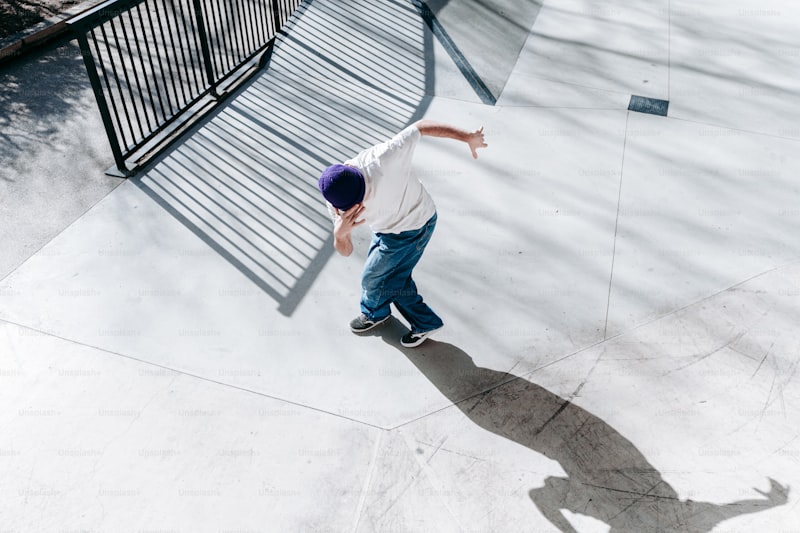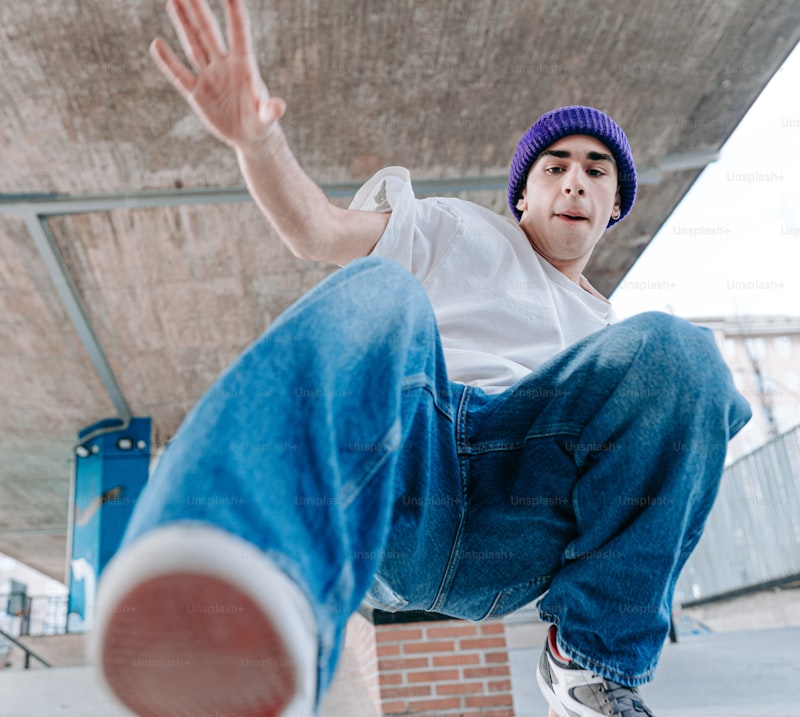1. Ballet: Known for its grace and precision, ballet originated in the Italian Renaissance courts and later developed into a formalized art form in France and Russia. It demands strength, flexibility, and meticulous technique, with dancers often portraying stories through elegant movements and pointe work.
2. Hip Hop: Emerging from the streets of New York City, hip hop dance is characterized by its urban vibe and energetic movements. It encompasses a wide range of styles including breaking, locking, and popping, each with its own distinctive rhythms and improvisational elements.
3. Salsa: Originating in Cuba, salsa is a vibrant and sensual dance style infused with Afro-Caribbean beats. It’s known for its intricate footwork, spicy hip movements, and dynamic partner work. Salsa clubs worldwide echo with the infectious rhythm of this passionate dance.
4. Contemporary: A blend of ballet and modern dance, contemporary dance defies strict rules and embraces freedom of expression. It explores emotions and themes through fluid movements and creative choreography, often pushing the boundaries of traditional dance.
5. Tango: Hailing from Argentina, the tango is a dramatic and intense dance that thrives on connection and chemistry between partners. Its staccato movements and passionate embraces tell stories of love, desire, and longing, making it an enduring favorite in dance communities globally.
6. Flamenco: Rooted in Andalusian culture, flamenco is an expressive and deeply emotional art form. It features percussive footwork, intricate hand movements, and soulful guitar music. Flamenco performances are fiery displays of passion and strength.
7. Bollywood: Originating from India’s vibrant film industry, Bollywood dance is a fusion of classical Indian dance, folk dances, and modern influences. It’s characterized by colorful costumes, energetic choreography, and upbeat music, captivating audiences with its exuberance and storytelling.
8. Jazz: With its origins in African-American communities, jazz dance is dynamic and syncopated, blending elements of ballet, modern dance, and tap. It emphasizes individual style and improvisation, reflecting the spirit of jazz music’s spontaneity and rhythm.
Each of these dance styles offers a unique glimpse into diverse cultures and artistic expressions, uniting people through movement, music, and shared experiences on dance floors worldwide.
Unveiling the Rhythm: A Deep Dive into the Most Popular Dance Styles Worldwide
Dance is more than just movement; it’s a universal language that speaks to our souls. From lively salsa beats to graceful ballet spins, the world of dance is as diverse as it is captivating. Let’s take a journey into some of the most popular dance styles that have enthralled people across the globe.
Ballet: Imagine dancers gliding across the stage with effortless grace, their movements telling stories of love, tragedy, and triumph. Ballet, originating from the Italian Renaissance courts of the 15th century, has evolved into a disciplined art form that demands strength, flexibility, and precision. It’s a blend of beauty and athleticism, where every leap and pirouette is executed with poise and elegance.

Hip-hop: On the other end of the spectrum lies hip-hop, a genre born from the streets of New York City in the 1970s. It’s a cultural phenomenon that goes beyond dance, encompassing rap music, graffiti art, and urban fashion. Hip-hop dance is characterized by its raw energy, fluid movements, and creative expression. From breakdancing to krumping, each style within hip-hop tells a unique story of street culture and personal narrative.
Salsa: If you crave passion and rhythm, salsa might be your dance of choice. Originating in Cuba and Puerto Rico, salsa is a vibrant blend of Afro-Caribbean and Latin influences. Its infectious beats and sensual movements make it a favorite on dance floors worldwide. Salsa is all about connection – with your partner, the music, and the cultural heritage that pulses through every step.
Bollywood: Stepping onto the lively streets of Mumbai, Bollywood dance emerges as a celebration of Indian cinema and culture. It’s a fusion of classical Indian dance styles with folk dances, modern jazz, and even hip-hop. Bollywood dance is known for its expressive gestures, colorful costumes, and high-energy choreography. It’s not just about the moves; it’s about storytelling through dance, capturing the emotions and drama of Bollywood films.
Flamenco: Originating from the Andalusian region of Spain, flamenco is a passionate and soulful expression of Spanish gypsy culture. It’s characterized by its intricate footwork, rhythmic handclaps, and emotive guitar music. Flamenco dancers, with their dramatic poses and intense gazes, convey a range of emotions – from joy and sorrow to defiance and longing. It’s a dance that demands both technical skill and emotional depth.
Each of these dance styles has carved out its own niche in the global cultural tapestry, captivating audiences with its unique blend of history, emotion, and creativity. Whether you’re drawn to the elegance of ballet, the raw energy of hip-hop, the passion of salsa, the drama of Bollywood, or the intensity of flamenco, the world of dance offers something for everyone to enjoy and explore.
From Salsa to Hip-Hop: Exploring the Global Appeal of Popular Dance Styles
Imagine yourself swaying to the infectious melodies of salsa music, immersed in the passionate embrace of Latin dance. Originating in the Caribbean, salsa’s intricate footwork and sensual movements speak a language of their own, embodying the joy and spontaneity of its cultural roots. What began as a fusion of Afro-Cuban rhythms and jazz influences has evolved into a global phenomenon, enchanting dancers from Havana to Tokyo.
Contrastingly, hip-hop emerges from the bustling streets of 1970s Bronx, New York, as a voice for urban youth expressing their realities through movement. With its bold, expressive style and emphasis on improvisation, hip-hop dance channels the energy of the streets into powerful choreography. From breakdancing to popping and locking, each move tells a story of struggle, resilience, and creativity, resonating with young people worldwide.
What is it about these dance styles that captivate millions across continents? Beyond their rhythmic appeal, salsa and hip-hop offer a unique blend of cultural expression and social connection. Salsa embodies the passion and warmth of Latin America, inviting dancers into a world of romance and celebration. Meanwhile, hip-hop speaks to the rebellious spirit and raw authenticity of urban communities, fostering solidarity and self-expression among its participants.
Moreover, these dance forms serve as cultural ambassadors, bridging gaps between nations and fostering understanding through shared experiences. Whether performed in grand ballrooms or underground clubs, salsa and hip-hop transcend language barriers, uniting people in the universal language of rhythm and movement.
As you delve into the global appeal of these popular dance styles, consider their ability to ignite passion, provoke thought, and celebrate diversity. From salsa’s fiery rhythms to hip-hop’s bold statements, each step embodies a journey through history, culture, and the human spirit. So, next time you find yourself drawn to the dance floor, remember the stories woven into each sway and spin, connecting you to a world of rhythm and expression without boundaries.
In Step with Culture: The Evolution and Impact of the Most Popular Dance Styles
Dance, beyond its rhythmic motions, embodies a vibrant tapestry of human expression, reflecting cultural shifts and societal dynamics through the ages. From classical ballet to contemporary hip-hop, each dance style tells a compelling story of its evolution and enduring impact on our cultural landscape.
Ballet, with its origins traced back to 15th-century Italian Renaissance courts, exemplifies grace, precision, and artistic refinement. Evolving from courtly entertainment to a globally recognized art form, ballet transcends language barriers, captivating audiences with its elaborate choreography and emotive storytelling.
In stark contrast, hip-hop emerged from the streets of 1970s New York City, driven by the creative energy of marginalized communities. Characterized by its expressive freedom and rhythmic complexity, hip-hop swiftly became a powerful voice for social commentary and cultural identity. Its infectious beats and improvisational nature have since influenced mainstream music, fashion, and even political discourse worldwide.
Latin dances like salsa and tango, originating from vibrant Latin American communities, embody passion, sensuality, and rich cultural heritage. Rooted in historical narratives of love, struggle, and celebration, these dances have transcended borders, captivating hearts and inspiring global dance enthusiasts with their fiery rhythms and intricate footwork.
The evolution of these dance styles parallels the evolution of our societies, reflecting shifting attitudes towards tradition, identity, and creativity. They serve not only as forms of entertainment but also as conduits for emotional expression and communal bonding.

As we continue to embrace diversity and innovation in the arts, dance remains a universal language that connects people across continents and generations. Its ability to adapt and evolve ensures its relevance in an ever-changing world, where cultural exchange and artistic expression thrive.

This article captures the essence of different dance styles while highlighting their cultural significance and impact on society, all while maintaining a conversational and engaging tone.
Dance Around the World: Discovering the Diversity of Popular Dance Forms
Dance, a universal language of rhythm and expression, bridges cultures worldwide. From the energetic salsa beats of Latin America to the graceful movements of classical ballet in Europe, dance embodies the rich tapestry of global traditions. Each region offers its unique dance forms, reflecting history, community, and artistic expression.

In Latin America, salsa dances through the streets with its fiery tempo and intricate footwork, embodying the passion and vibrancy of its people. Meanwhile, across the globe in India, Bharatanatyam captivates with its storytelling gestures and precise rhythmic patterns, deeply rooted in Hindu mythology and spiritual devotion.
Traveling to Africa, one encounters the infectious rhythms of the African dance forms, such as the energetic steps of the South African Gumboot dance or the celebratory movements of West African dance, each steeped in cultural rituals and communal celebrations.
Venturing into Asia, the delicate artistry of traditional Japanese Kabuki dance mesmerizes with its elaborate costumes and expressive gestures, narrating tales of honor and romance through movement alone. In contrast, the vibrant colors and rapid footwork of Chinese lion dance symbolize good luck and prosperity, a staple of festive occasions.
Across the Atlantic, Europe boasts a plethora of classical dance forms like ballet, where grace and technique merge seamlessly in a display of disciplined elegance. The Spanish flamenco, on the other hand, echoes with passion and intensity, its rhythmic claps and heel stomps telling stories of love and loss.
In summary, dance serves not only as entertainment but as a window into the soul of diverse cultures worldwide. Whether tracing its origins in community rituals or evolving through modern interpretations, each dance form narrates a unique story of heritage, emotion, and artistic expression, enriching our understanding of the world’s cultural mosaic.
This article explores the captivating diversity of dance forms globally, weaving together the essence of each dance’s cultural significance and artistic expression in a fluent, engaging manner.
From Ballroom to Breakdance: Iconic Moves and Styles That Define Dance Culture
Let’s dive into the graceful realm of ballroom dancing first. Originating in the royal courts of Europe, ballroom dancing exudes sophistication and charm. Picture dancers gliding across the floor in perfect harmony, executing precise footwork and graceful spins. From the waltz’s sweeping motions to the passionate tango’s intricate steps, ballroom dancing is a celebration of tradition and skill. It’s a dance style where every step tells a story, every movement whispers of romance and tradition passed down through generations.
In stark contrast, breakdance emerges from the streets of New York City in the 1970s, a dynamic response to urban culture and hip-hop music. Breakdancers, or B-boys and B-girls, showcase athleticism, creativity, and a fearless spirit. Imagine dancers defying gravity with headspins and windmills, their bodies moving in ways that seem to defy physics. Breakdance is not just a dance form; it’s a statement of individuality and resilience, where dancers express themselves through intricate footwork, acrobatics, and improvised moves.
What makes these dance styles iconic goes beyond their physicality. They embody cultural narratives, social movements, and personal stories. Ballroom dancing symbolizes tradition, grace, and timeless elegance, while breakdance represents innovation, freedom, and the rebellious spirit of urban youth.
As we celebrate the diversity of dance culture, from the refined ballrooms to the gritty streets, we recognize that each style contributes to the rich tapestry of human expression. Whether you’re moved by the classic allure of ballroom or the raw energy of breakdance, these iconic moves transcend dance floors, leaving an indelible mark on our hearts and minds.
Behind the Beat: The Science and Psychology of Why Certain Dance Styles Are Popular

One of the key factors driving the popularity of dance styles is their ability to resonate with human emotions and cultural trends. Take hip-hop, for instance. Its energetic beats and expressive moves often mirror the struggles and aspirations of urban youth, resonating with a wide audience seeking empowerment and self-expression. The syncopated rhythms and intricate footwork of salsa, on the other hand, evoke passion and romance, tapping into universal emotions of love and desire.
Psychologically, dance styles that offer a sense of community and belonging tend to thrive. Social dances like the waltz or swing not only provide physical exercise but also create bonds between participants, fostering a sense of unity and joy. This communal aspect is crucial in understanding why certain dance styles endure across generations—they provide not just entertainment but also a shared cultural experience.
Moreover, the science behind dance popularity delves into neurobiology. When we dance, our brains release endorphins that uplift our mood and reduce stress. This natural high reinforces our desire to repeat the experience, making dance an addictive and enjoyable activity. Certain styles, with their repetitive yet evolving choreography, are particularly effective at triggering this neurochemical response, further cementing their popularity.
In today’s interconnected world, the media also plays a pivotal role in amplifying dance trends. Platforms like TikTok can catapult a relatively obscure dance move into global stardom overnight, shaping popular culture and influencing millions of users to join in the fun.
The allure of dance styles lies in their ability to connect with our emotions, create a sense of community, and trigger neurochemical responses that keep us coming back for more. By understanding the science and psychology behind these rhythms, we gain insight into why certain dance styles capture our hearts and hips, while others struggle to find their groove.
Frequently Asked Questions
What are the differences between ballet, jazz, and contemporary dance?
Learn the key distinctions between ballet, jazz, and contemporary dance styles. Understand how each form emphasizes unique techniques, movements, and artistic expressions, catering to diverse preferences and performance styles.
How do I choose the right dance style for me?
To choose the right dance style, consider your interests, fitness level, and goals. Explore different styles through classes or videos, and assess which ones resonate with your personality and physical abilities. Trying various options will help you find the best fit.
What are the most popular dance styles worldwide?
Explore the diversity of global dance styles with our concise guide. Learn about popular dance forms spanning continents, from energetic Latin dances like salsa and samba to graceful ballet and dynamic hip-hop. Discover the cultural richness and rhythmic expressions that define these celebrated dance genres.
Where can I find beginner classes for popular dance styles?
Discover beginner classes for popular dance styles at local dance studios, community centers, or online platforms specializing in dance education. Look for courses in styles like salsa, hip-hop, ballet, or ballroom to start learning today.
Can I learn multiple dance styles simultaneously?
Learn whether it’s feasible to learn multiple dance styles simultaneously. Understand the benefits and challenges of pursuing different dance forms concurrently, and gain insights on how to effectively manage your learning journey.



